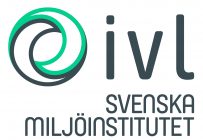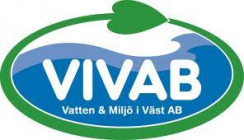Nutrient recycling from wastewater – literature study: an overview of technologies, costs and environmental impact
IVL Swedish Environmental Institute, together with a number of project partners and through financial support from, among others, Swedish Water & Wastewater Association, has carried out a review of methods for recycling nitrogen, sulphur and potassium from wastewater.
The report describes established and new technologies for nitrogen recovery from wastewater and compares the nitrogen recovery methods with other ways of producing nitrogen fertiliser in terms of climate impact and costs. The report also includes a brief review of opportunities for potassium and sulphur recovery and a status update of phosphorus recovery methods.
Recycling of nutrients from wastewater in Sweden today takes place almost exclusively by spreading of sewage sludge on arable land; about a third of all sludge is used in this way. Dewatered sludge contains only about 15 % of the nitrogen present in the wastewater. Except of sludge spreading, increased nitrogen recovery therefore has therefore great potential. There is a risk that even the minor nitrogen recycling with sludge today will be stopped if sludge use on arable land is to be banned at the same time as the requirement for phosphorus recycling is introduced. The most interesting methods of phosphorus recovery involve sludge incineration and recovery from ashes, and this means that the nitrogen content is lost during the incineration.
Nitrogen is mainly removed with biological methods in the treatment plant’s mainstream today. An alternative is to separate the nitrogen present in reject water, i.e. the highly concentrated water that remains when dewatering digested sludge. The amount of nitrogen in the reject water is about the same as the amount of nitrogen in the sludge itself. The nitrogen in reject water can be recycled into fertilizer products by various chemical-physical methods. If nitrogen is recycled, less nitrogen needs to be removed biologically, which saves energy and reduces greenhouse gas emissions, especially nitrous oxide. Nitrogen recovery processes are, however, energy and chemical intensive, resulting in indirect greenhouse gas emissions and relatively high cost.
A literature study showed that ammonia stripping and contact membranes are the techniques for nitrogen recovery from reject water that are applied in full scale and have similar and relatively high consumption of chemicals and energy. For wastewater streams similar to reject water, other methods have been tested, including thermal stripping of ammonia with further chemical reaction with gypsum or distillation to ammonia water. Evaporation and distillation are also developed techniques that have the potential for nitrogen recovery.
Conventional production of nitrogen fertilizer depends on natural gas to obtain energy. Several technologies are now being developed where renewable energy can be used for the production of ammonia. The project evaluated the climate impact and costs for different nitrogen recovery methods compared with the production of nitrogen fertilizer from fossil and renewable energy sources. There was a big variation of results for the different recovery methods, but some conclusions can be drawn. The operating cost of nitrogen recovery with the established technologies (ammonia stripping and contact membranes) is slightly higher than the cost of producing nitrogen fertilizer from fossil and renewable energy sources, even when the cost of biological treatment of reject water with the most cost-effective biological methods is deducted. On the other hand, the climate impact from nitrogen recycling is lower than the climate impact from nitrogen fertilizer production and biological nitrogen removal. Several new recycling techniques, such as thermal stripping of ammonia and struvite precipitation with further acid treatment, have the potential to provide both lower cost and lower climate impact.
An alternative for recovering as much nitrogen as possible is to introduce source sorting systems and separate treatment of toilet water or urine. Recovery from the low-concentration mainstream of wastewater with an ion exchange process followed by recovery with stripping or contact membranes also has potential.
Project manager
Andryi Malovanyy
IVL Svenska Miljöinstitutet










